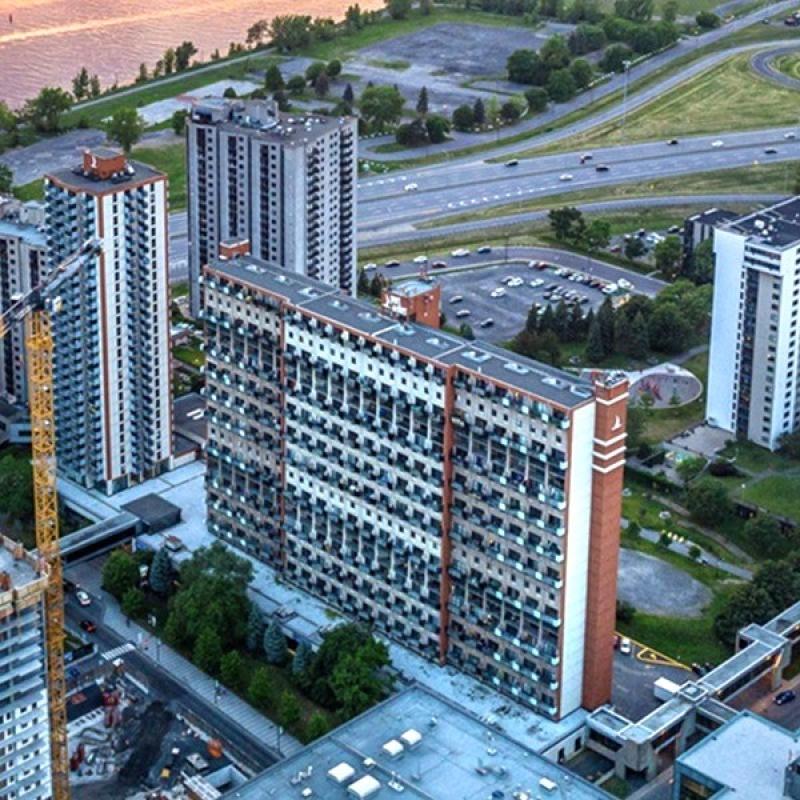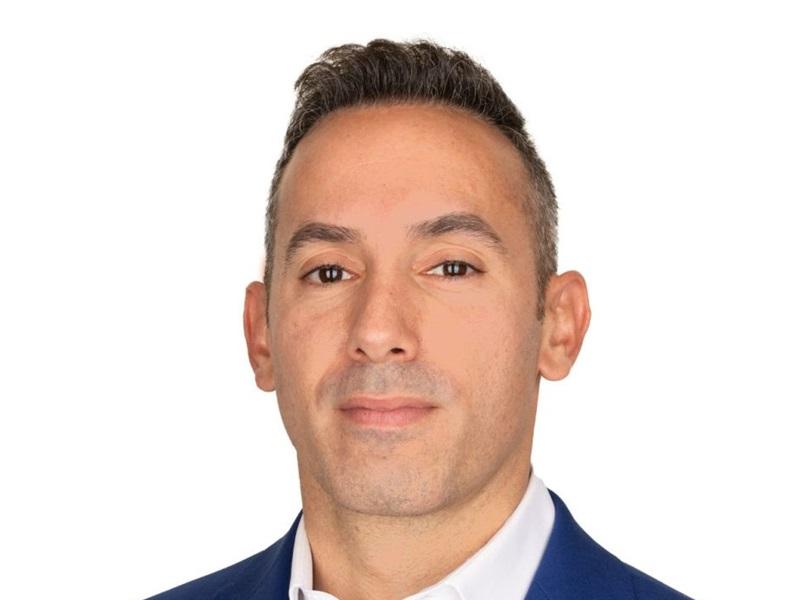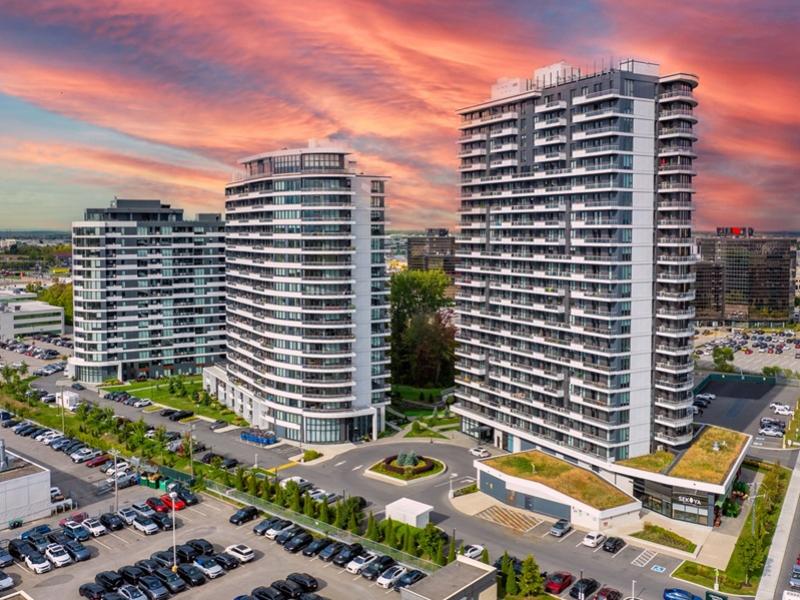
Kejja Group has spent $98.5 million to buy Port de Mer, a two-tower, 386-unit multifamily property in Longueuil on Montreal’s South Shore that was previously owned by Hazelview Properties.
The property, located at 99–101 Place Charles-LeMoyne in downtown Longueuil, is one of the tallest multifamily developments in the South Shore. It consists of 25 and 28 storey towers facing the Longueuil–Université-de-Sherbrooke métro station.
There has been “significant densification in this area as it increasingly becomes a business and institutional hub,” said Mark Sinnett, principal, executive vice-president, Quebec capital markets at Avison Young, which represented Hazelview in the transaction.
Sinnett added downtown Longueuil is earmarked for more than $3 billion in development investments, making Port de Mer “an ideal investment.”
Port de Mer is Kejja's first multifamily asset
Port de Mer is the first multifamily acquisition for Montreal-based Kejja Group and “a diversification play” for the company which owns more than 2,300 hotel rooms, said Amar Nijjar, founder and CEO of real estate debt advisory firm Finneo, which secured financing for Kejja.
Kejja’s hotels are primarily in Quebec, but it also has hotels in Regina and Calgary and one in Florida.
Among its hotels are the Hotel Bonaventure and Best Western Plus Europa, both in downtown Montreal, and the Delta Hotel in Calgary South and Hotel Classique in Quebec City. The company also owns two campgrounds in Quebec.
Built in 1968, Port de Mer comprises 664,977 square feet of gross leasable area. It has had more than $33 million of recent capital expenditures by Hazelview, which owned the property since 2014.
Currently, 93.5 per cent of the apartments are leased.
The development has 44,000 square feet of vacant retail space on two levels, which can be converted to residential units, particularly on the second floor, thus increasing net operating income, Nijjar said.
Finneo secures financing for acquisition
To make the transaction, Kejja secured a five-year mortgage of about $85 million from Desjardins at 3.61 per cent.
Nijjar said Kejja decided to go with the CMHC’s MLI Select program and could have obtained a 10 per cent higher loan amount than it did had it met the program’s strict accessibility requirements.
To qualify for potential leverage of up to 95 per cent loan-to-value (LTV) ratio, the CMHC required a potential $2 million capex program to widen suite entry doors and washrooms for easier wheelchair access, alter closet depths, and adjust bathroom layouts, Nijjar noted.
In the end, the client chose not to do the work because it would have caused a lot of disruption to tenants and would've taken a year or two to complete.
To obtain the financing, Finneo engaged with 15 lenders, including six CMHC lenders, six conventional lenders, and three B-note/mezzanine providers.
There was a wide range of terms:
- In the conventional market, potential lenders offered leverage between 65 per cent and 75 per cent LTV, pricing spreads between 150 to 210 basis points, and amortizations of 25 to 30 years. Several lenders offered two-year interest-only terms, with both recourse and non-recourse options.
- Nijjar said in the CMHC market “surprisingly, even at the pre-application submission stage, loan amounts varied significantly” by as much as 8.5 per cent, reflecting different approaches to underwriting net operating income and cap rates. Pricing ranged from 45 to 75 basis points on five- to 10-year terms.
Financing offers can vary widely
“Although there are 67 approved CMHC lenders in the country, there’s no consistency on how each of them will respond on a deal,” Nijjar said.
He noted that in a deal in the $100 million range, even 20 or 30 basis points of rate swing can make a significant difference over five or 10 years. In this deal, the variability between potential lenders “was quite stark.”
There is perhaps a perception that if you’re going to a CMHC approved lender under the MLI Select program, the outcome of the loan is going to be the same. But “that is a bit of a myth because there’s quite a bit of variability,” Nijjar said.










